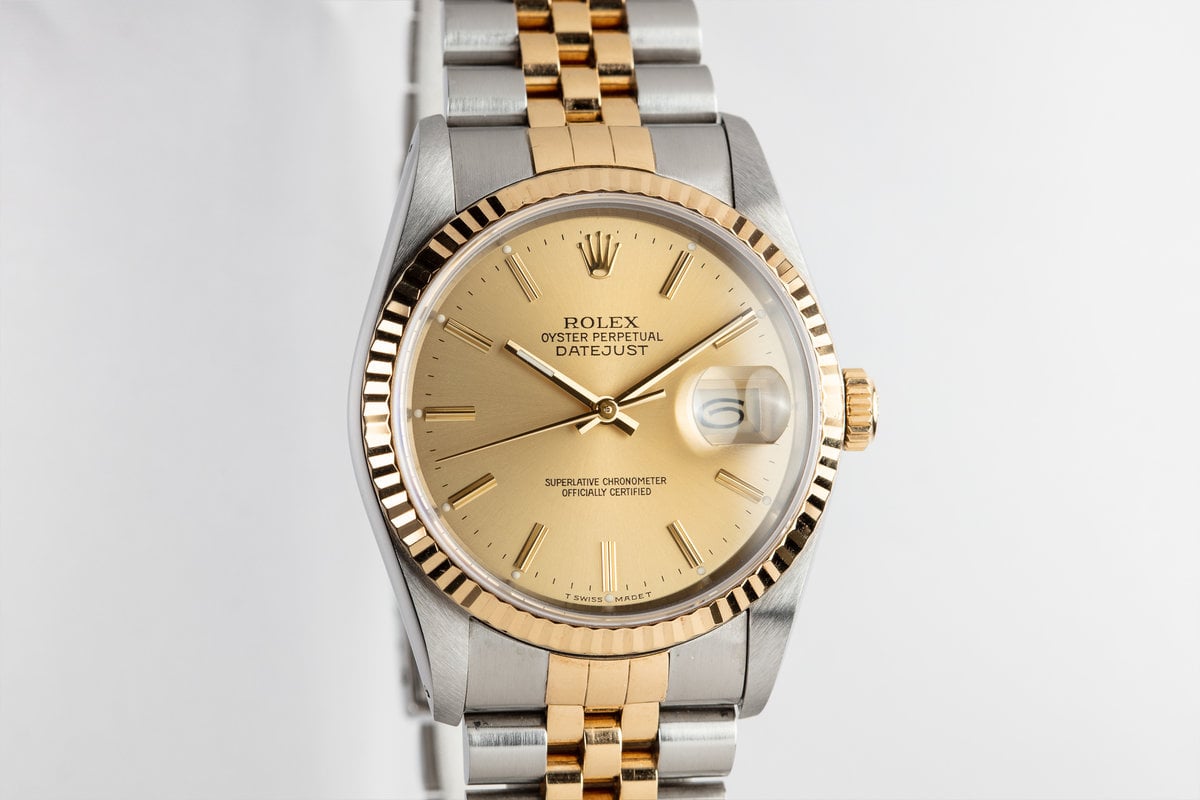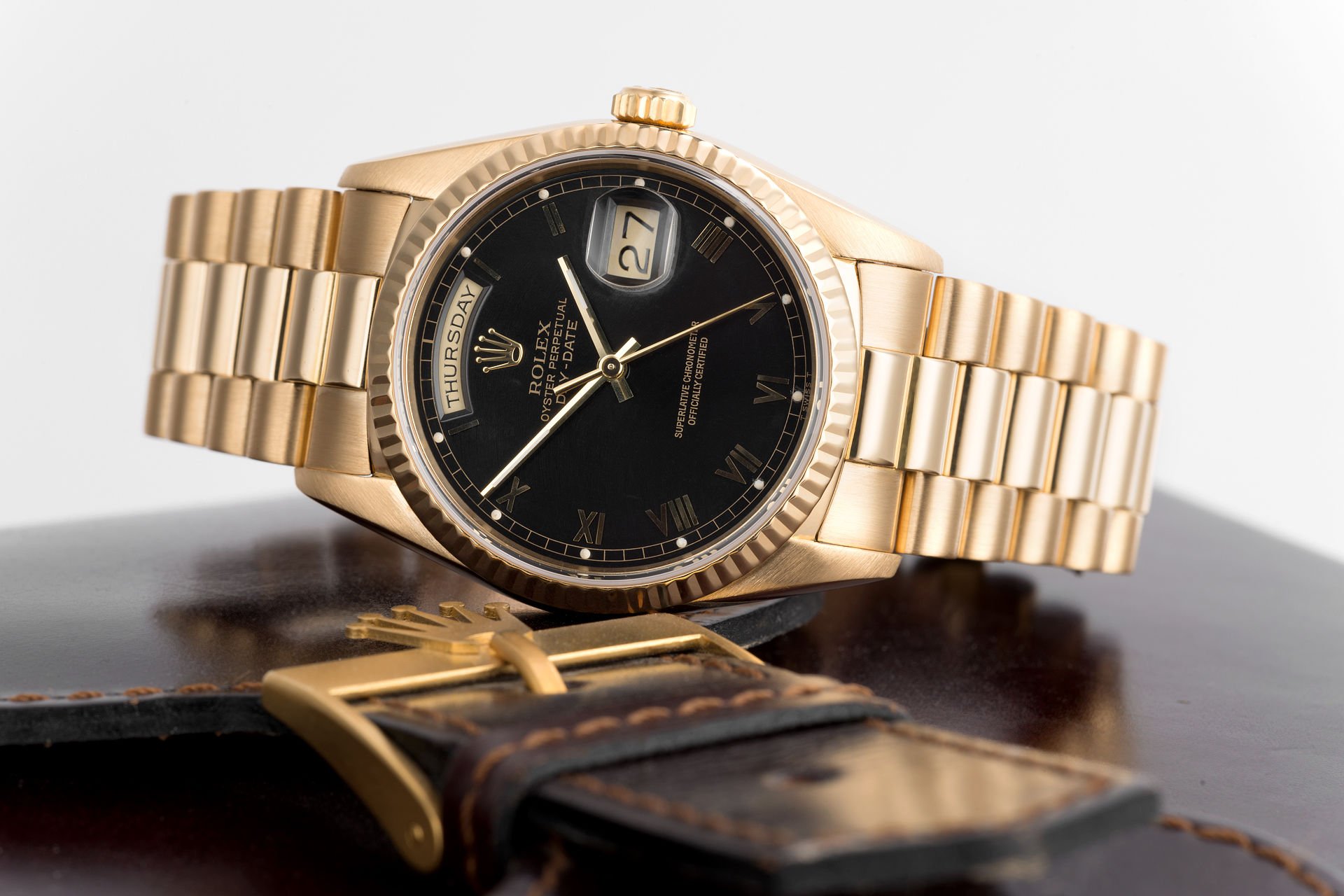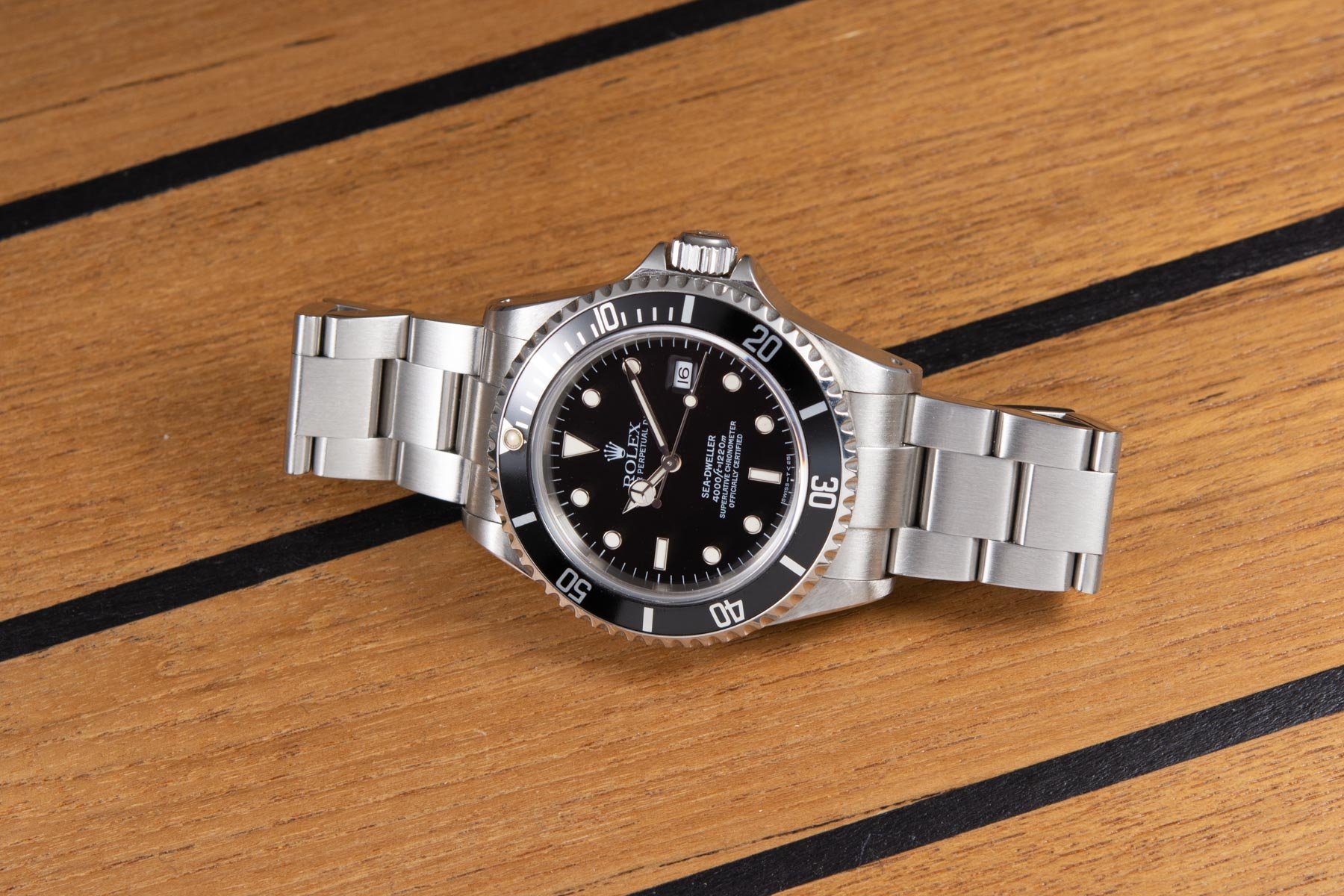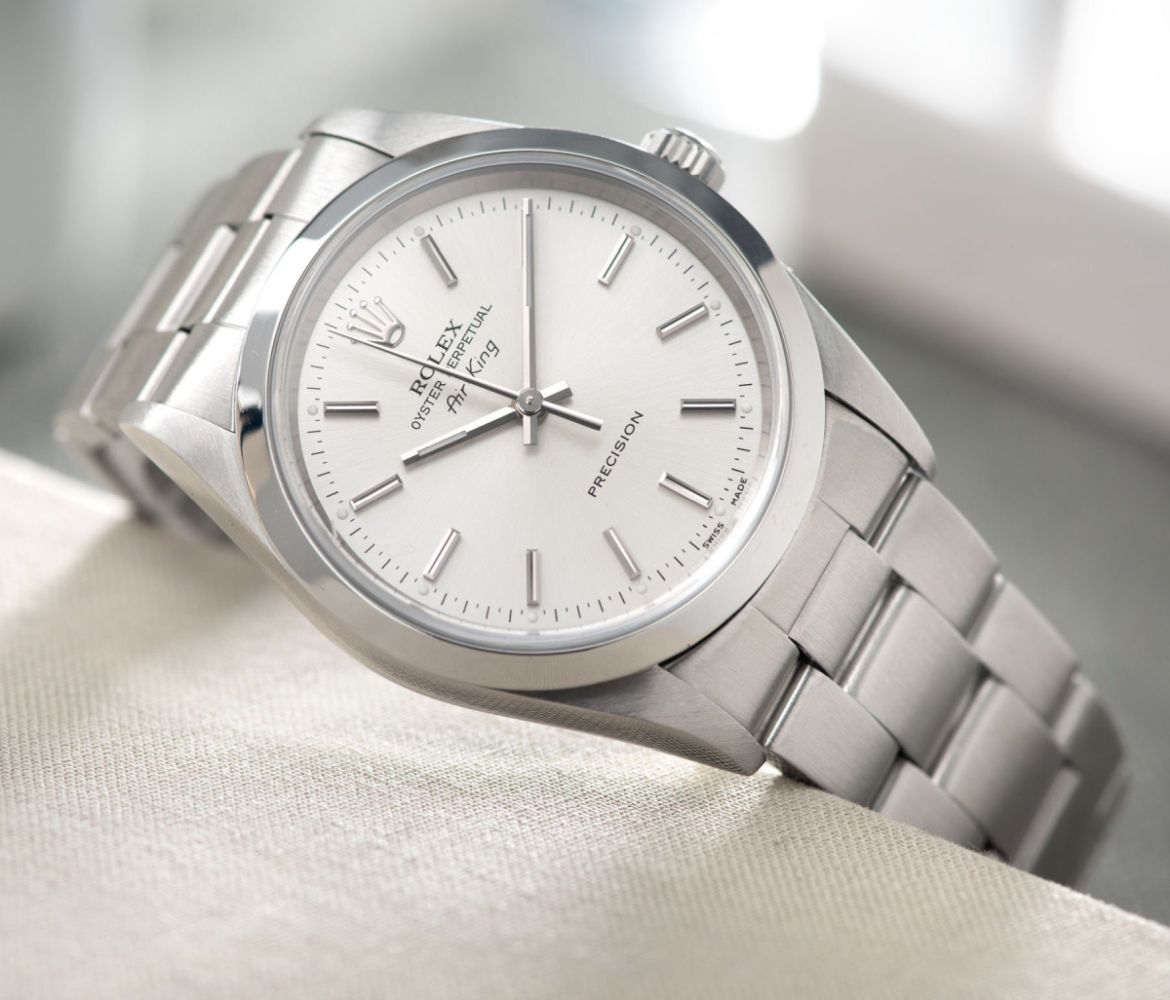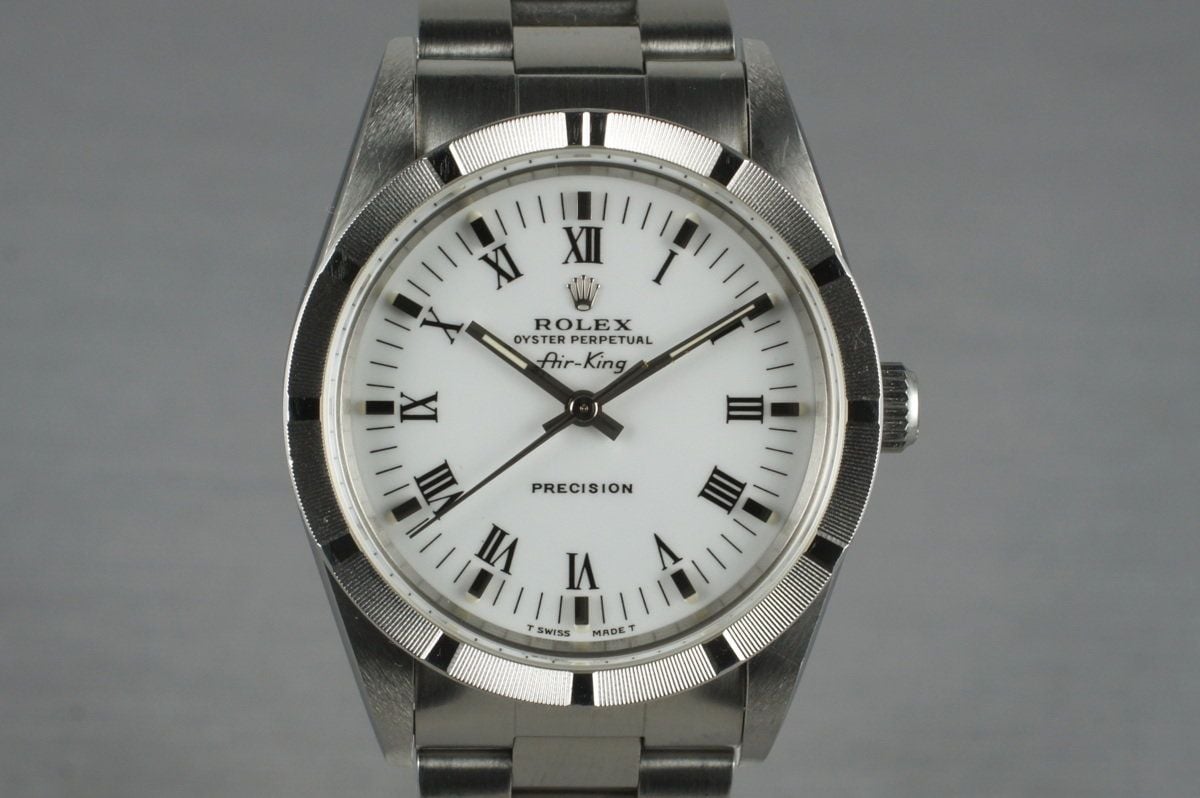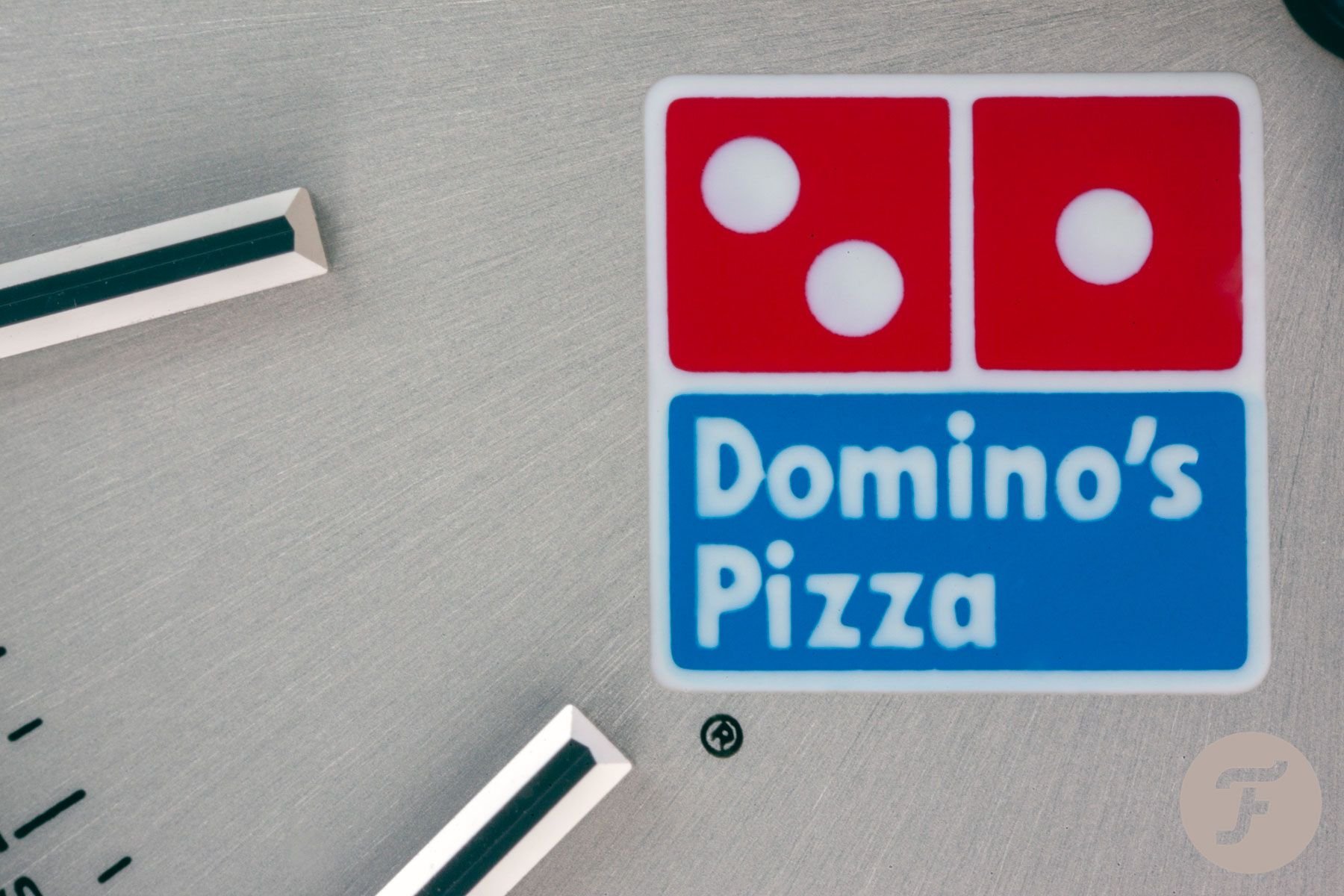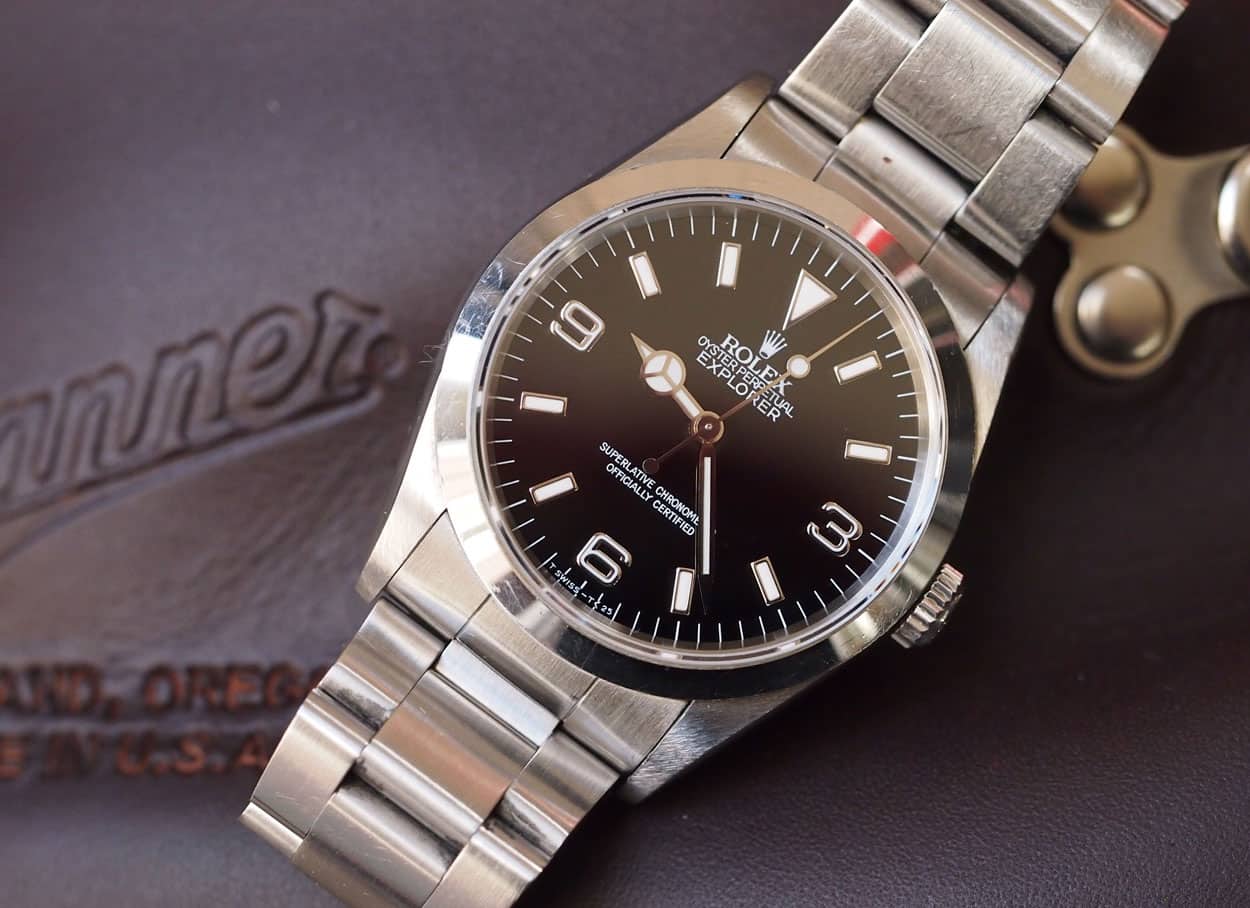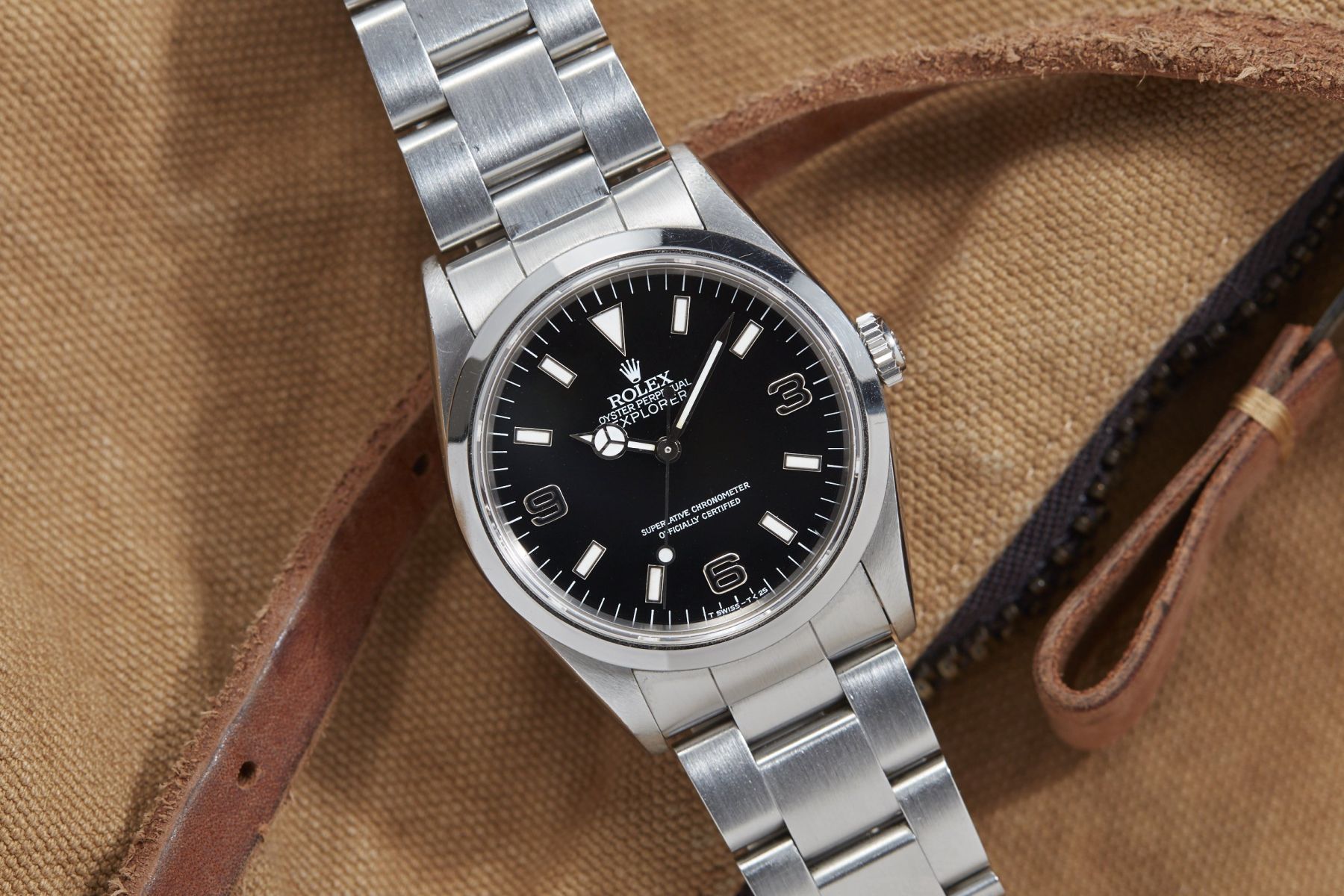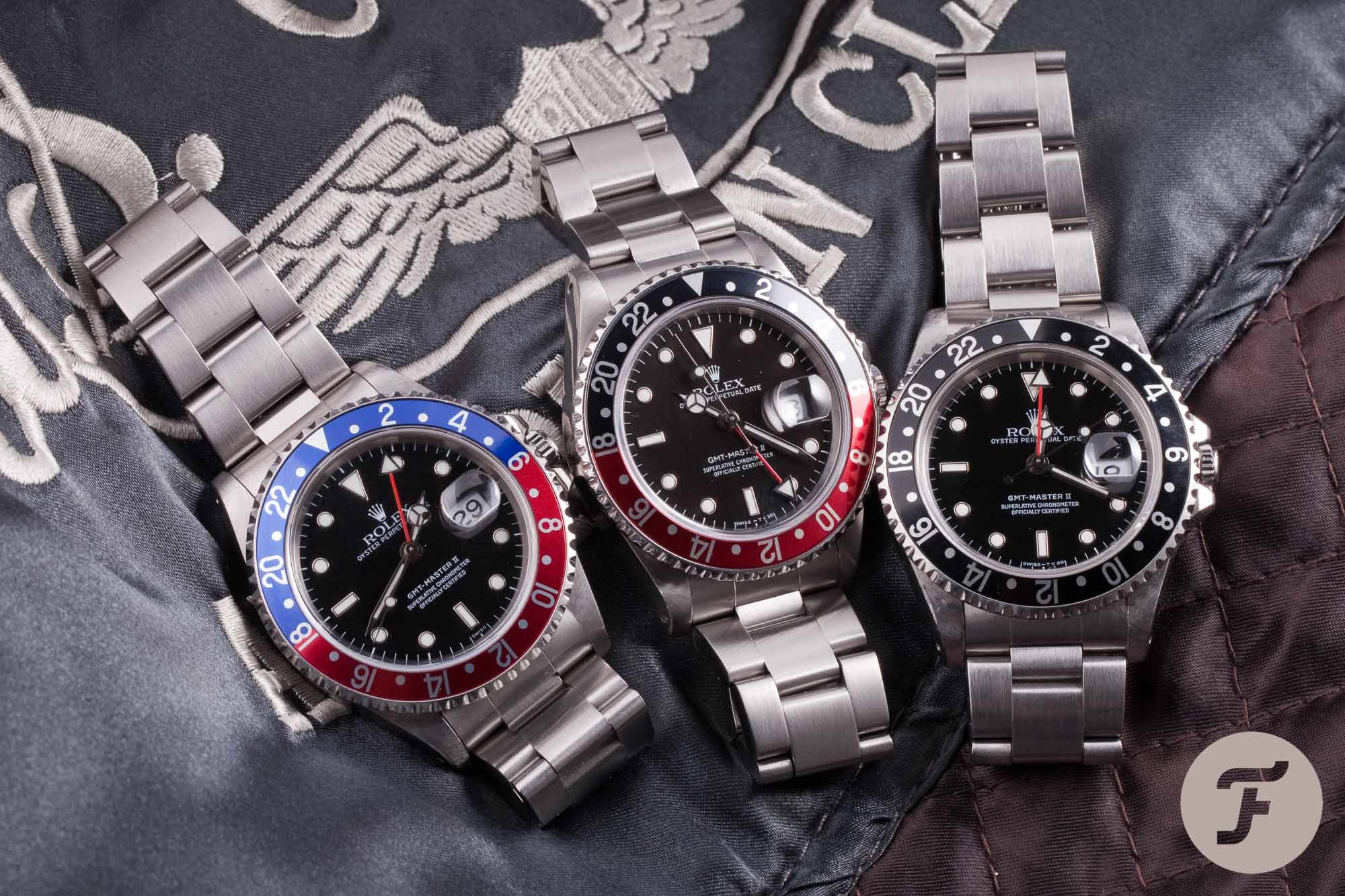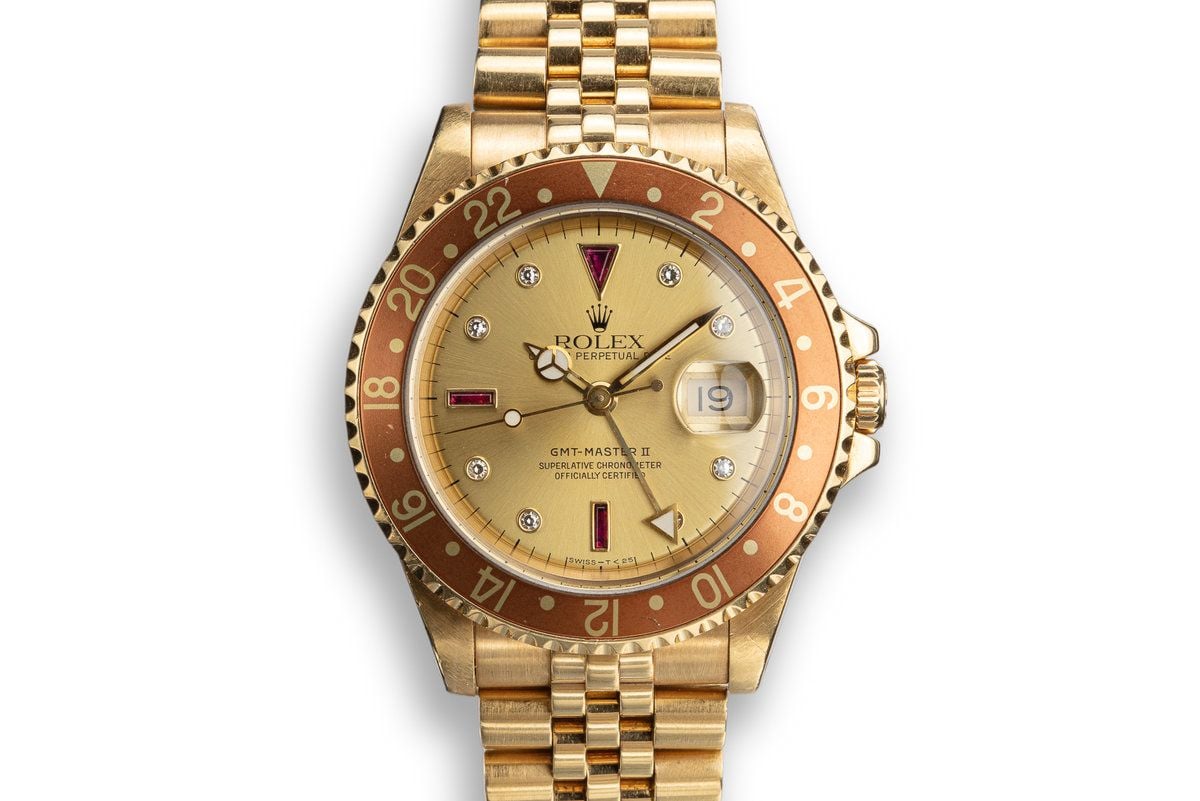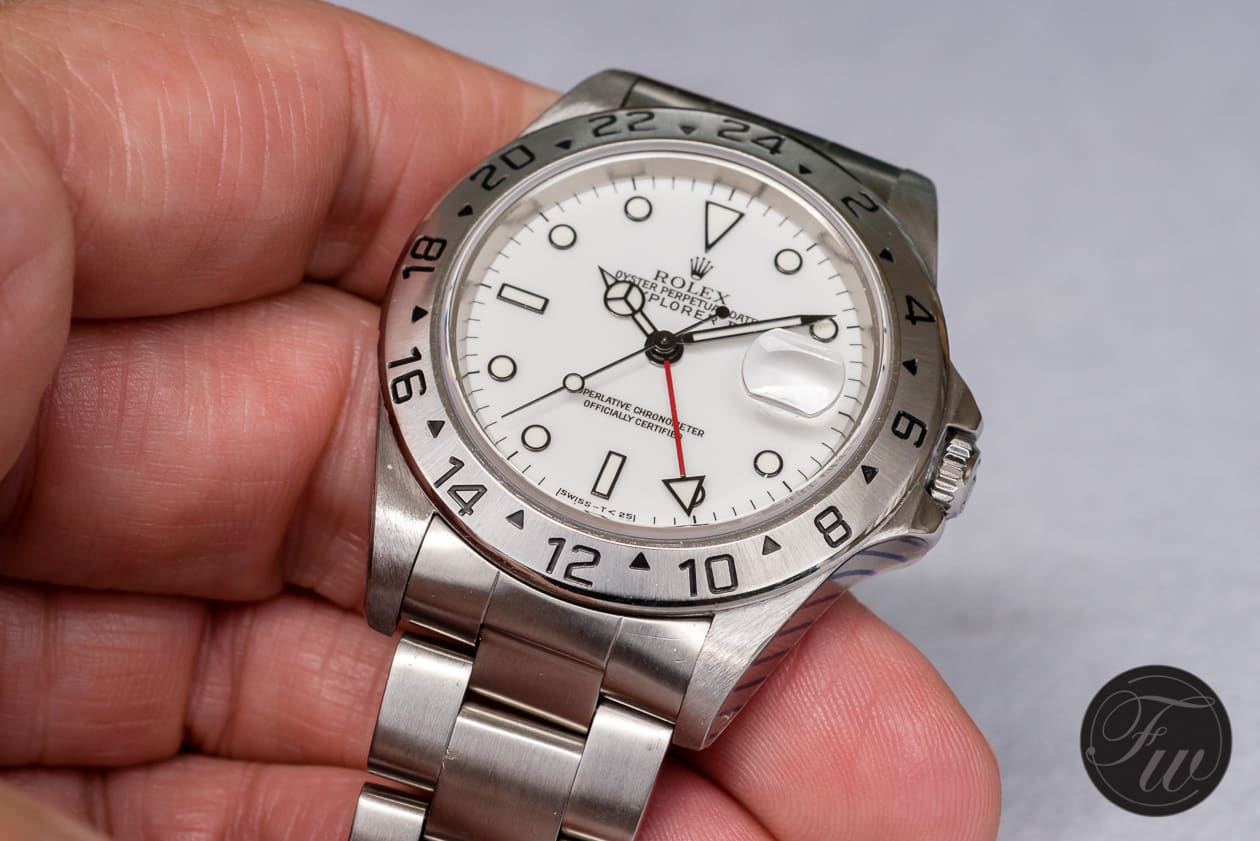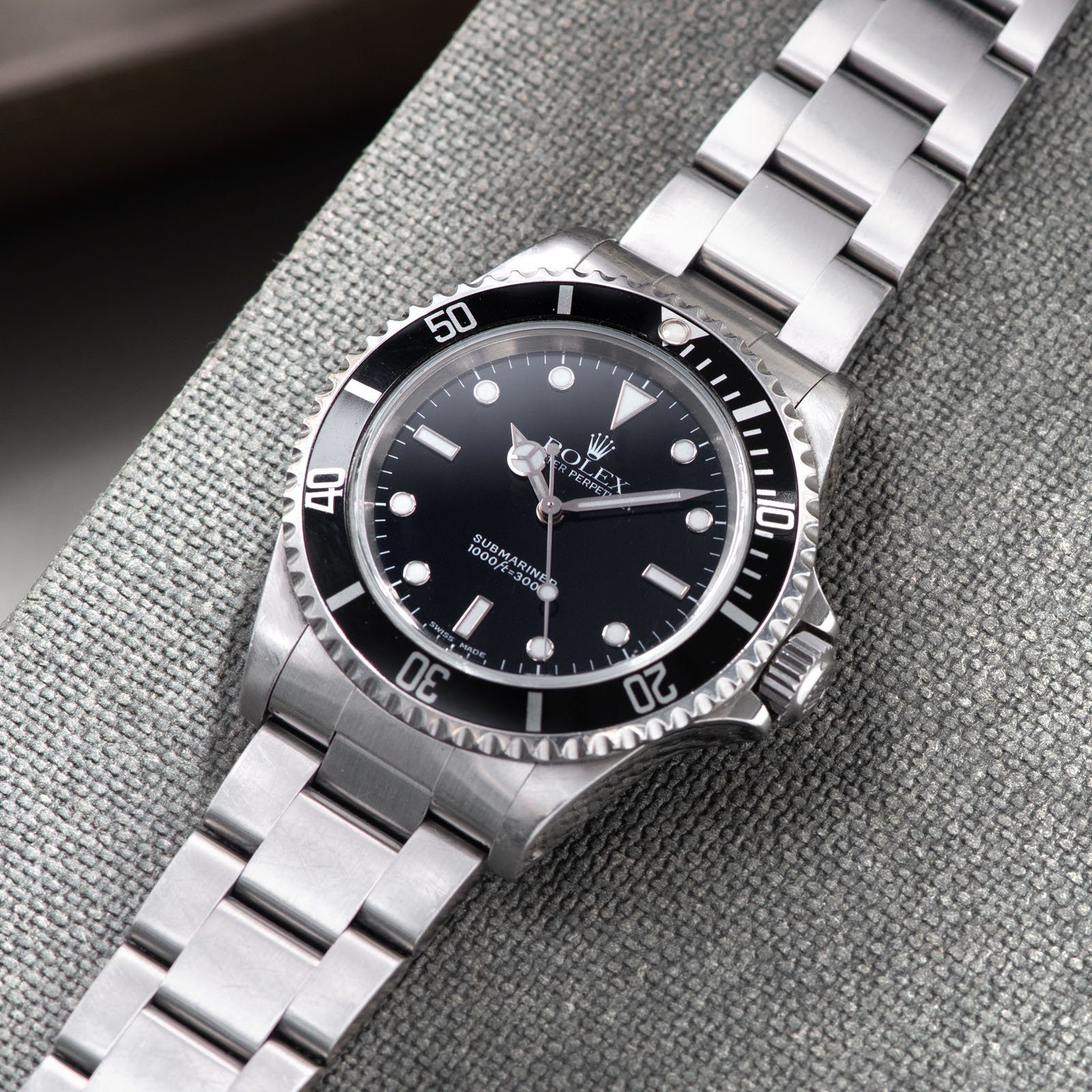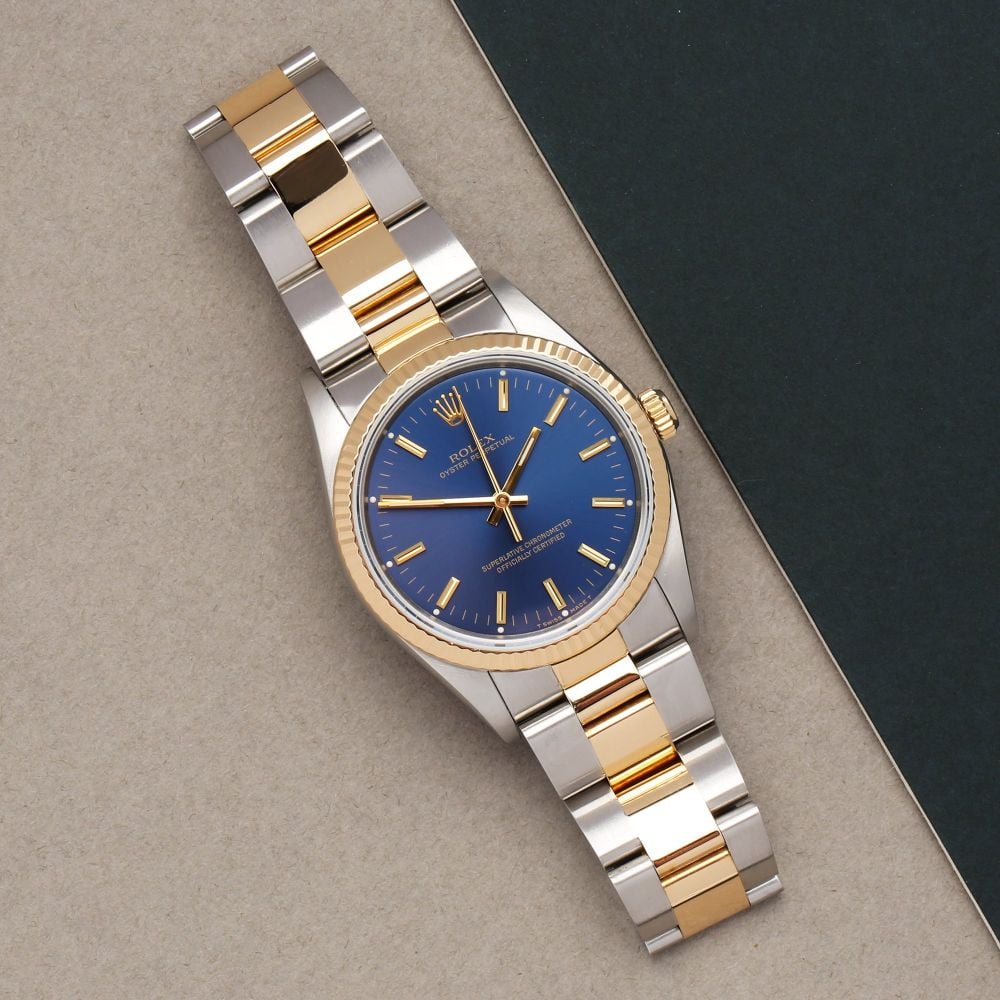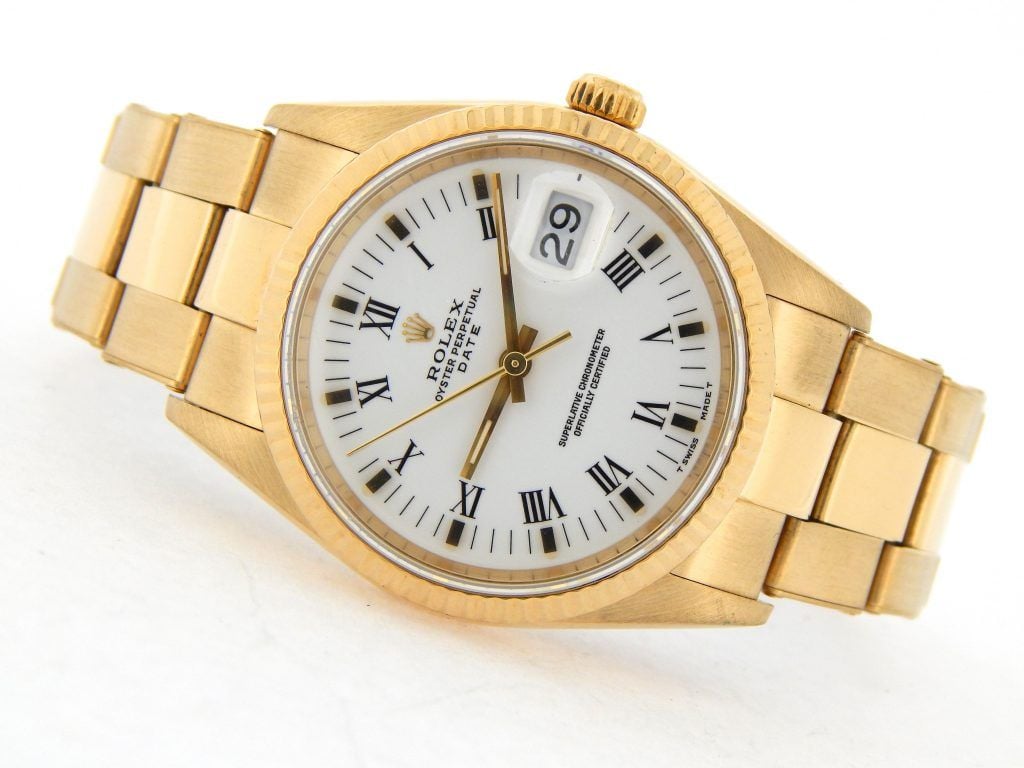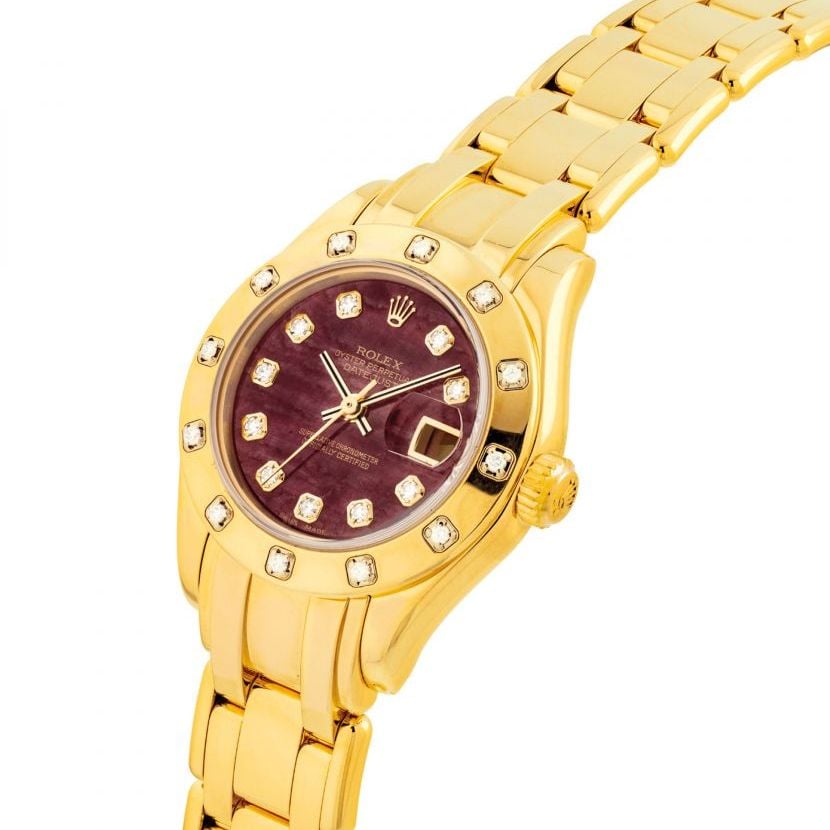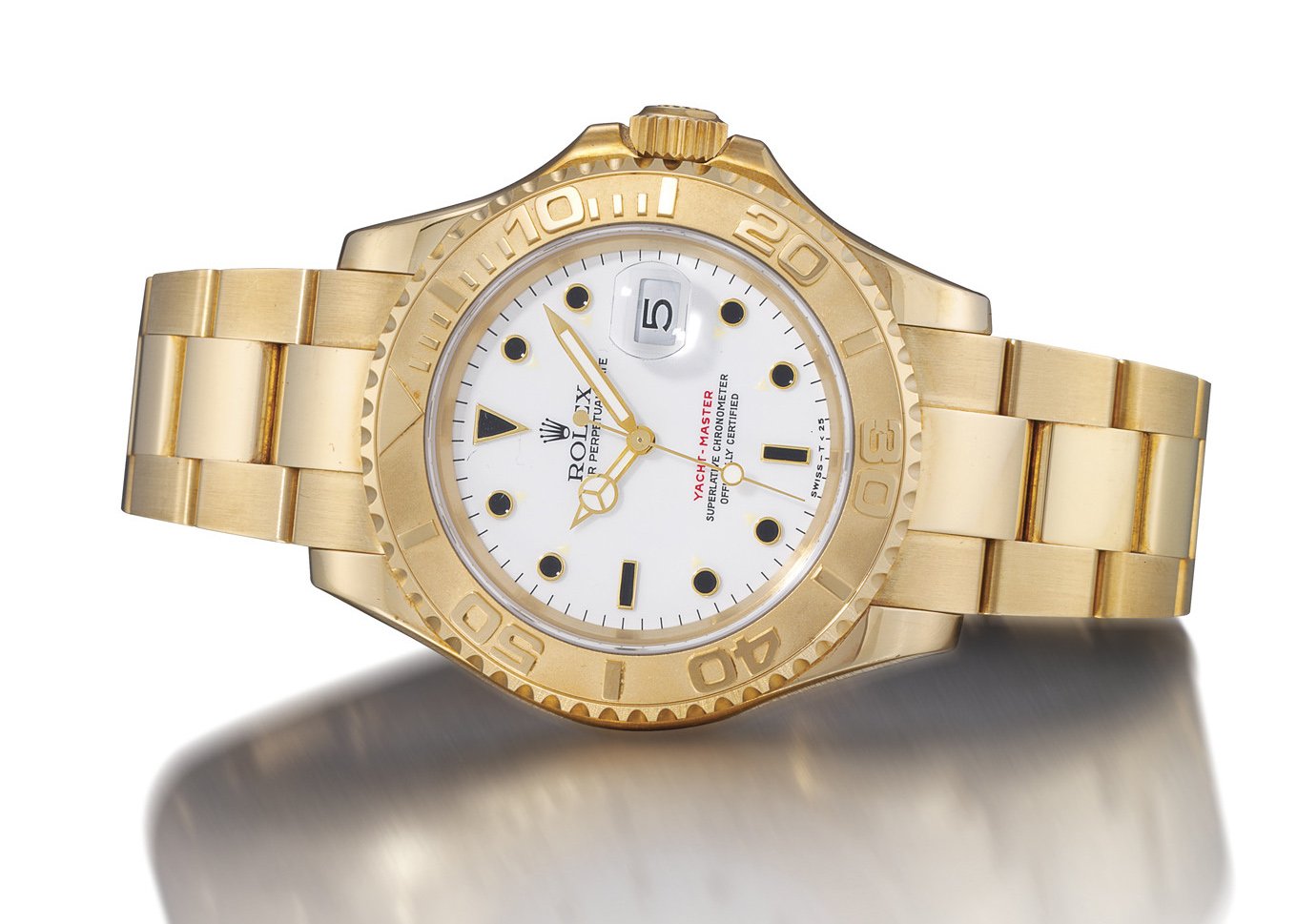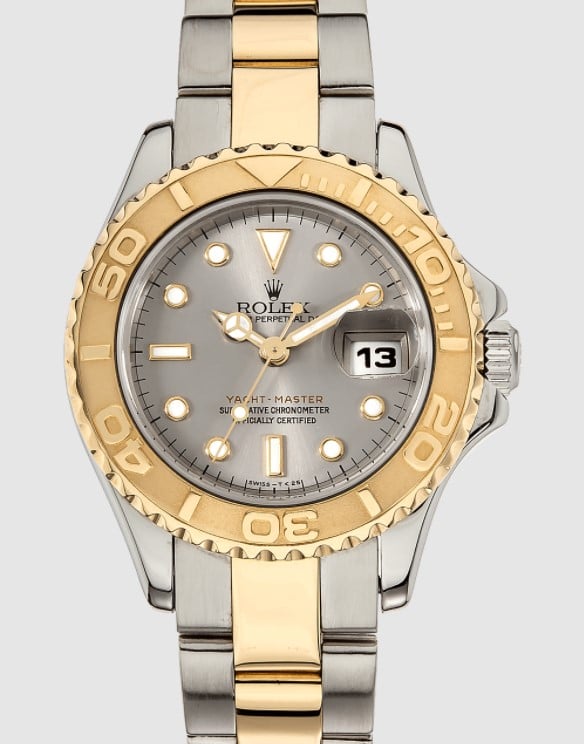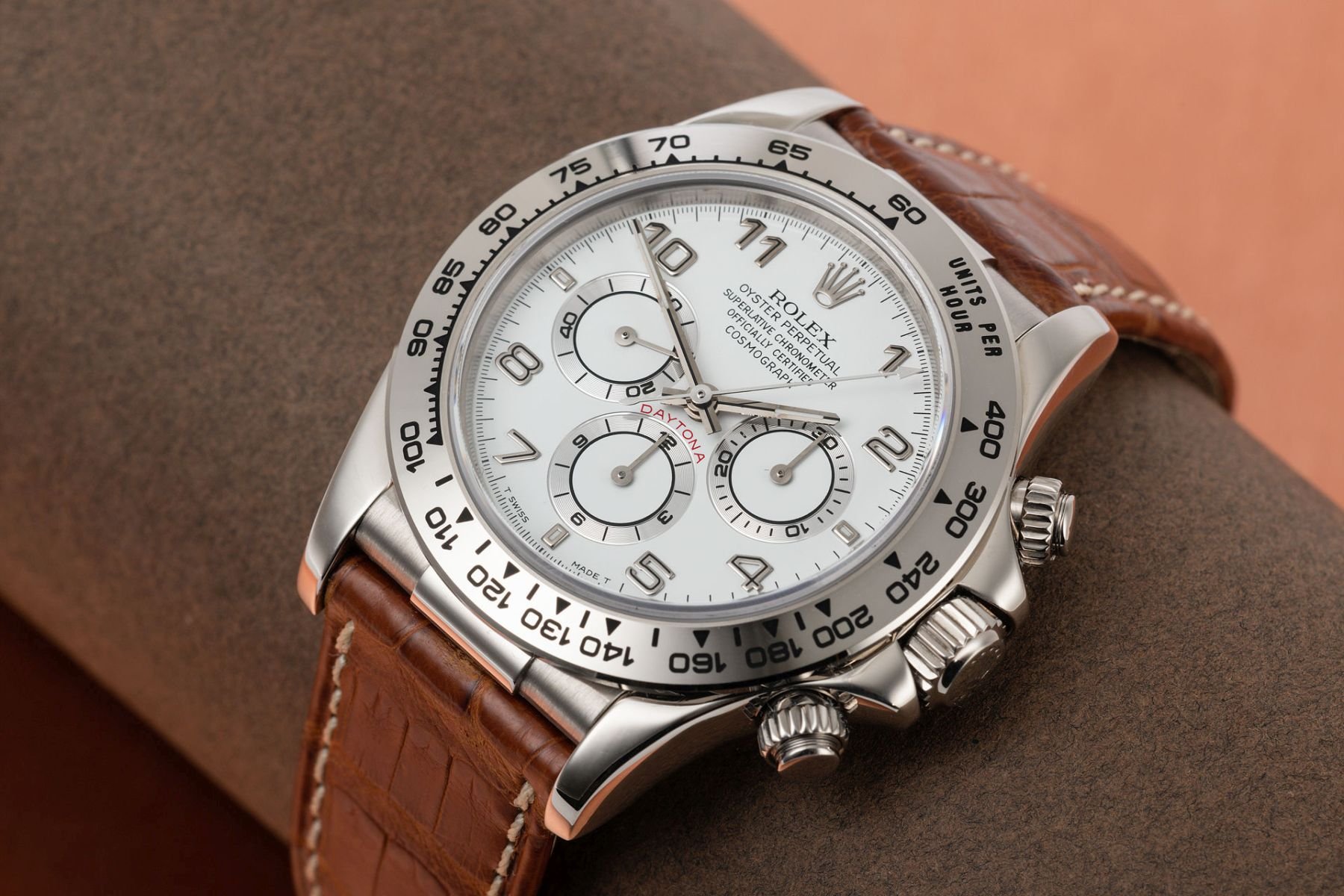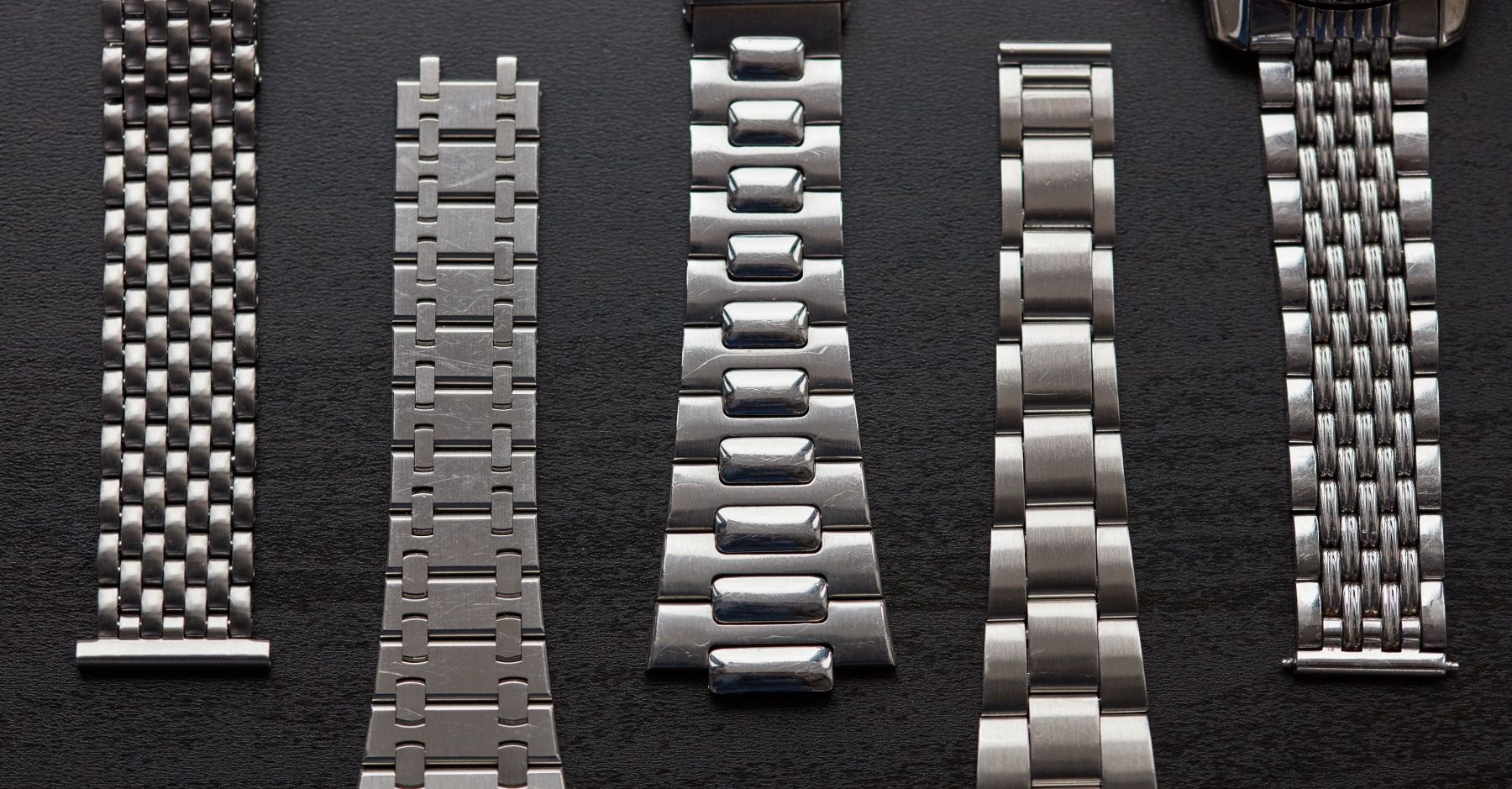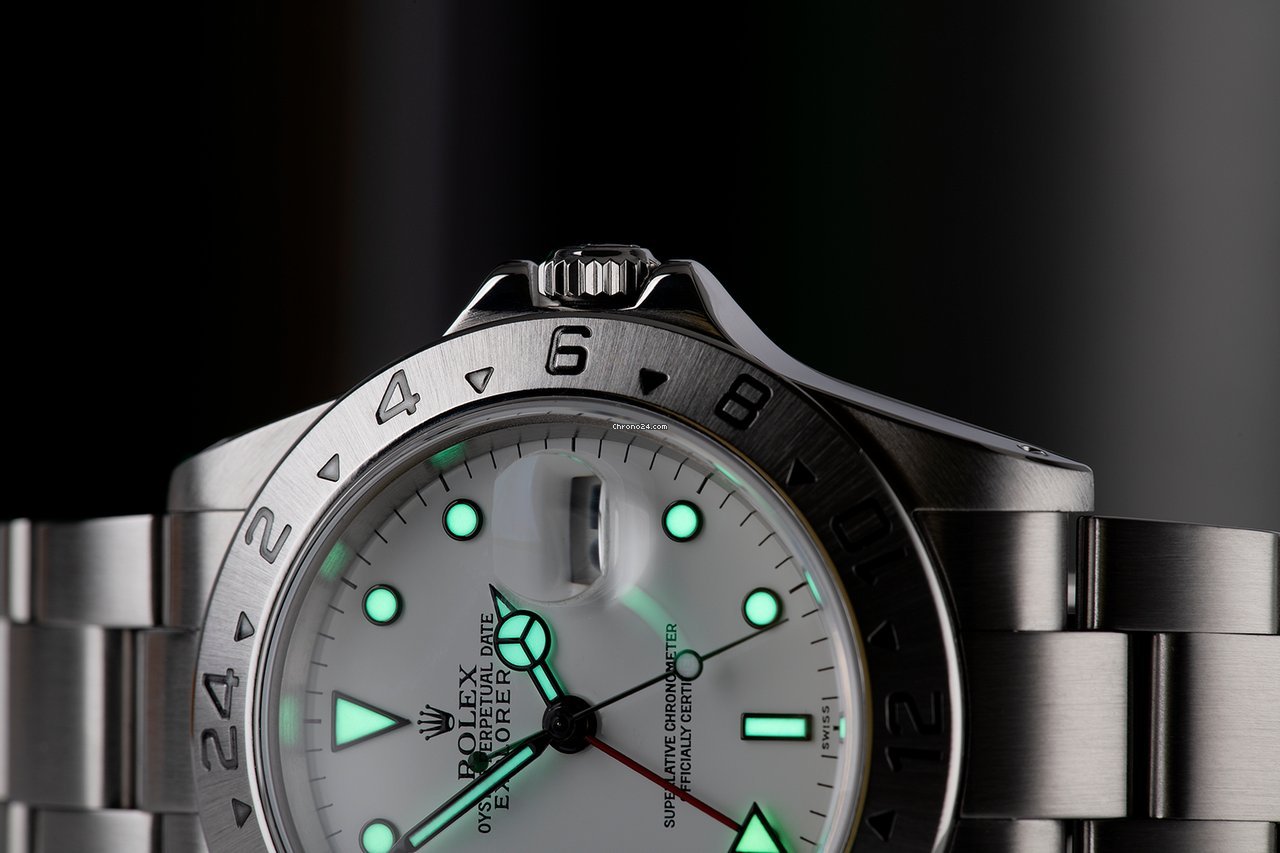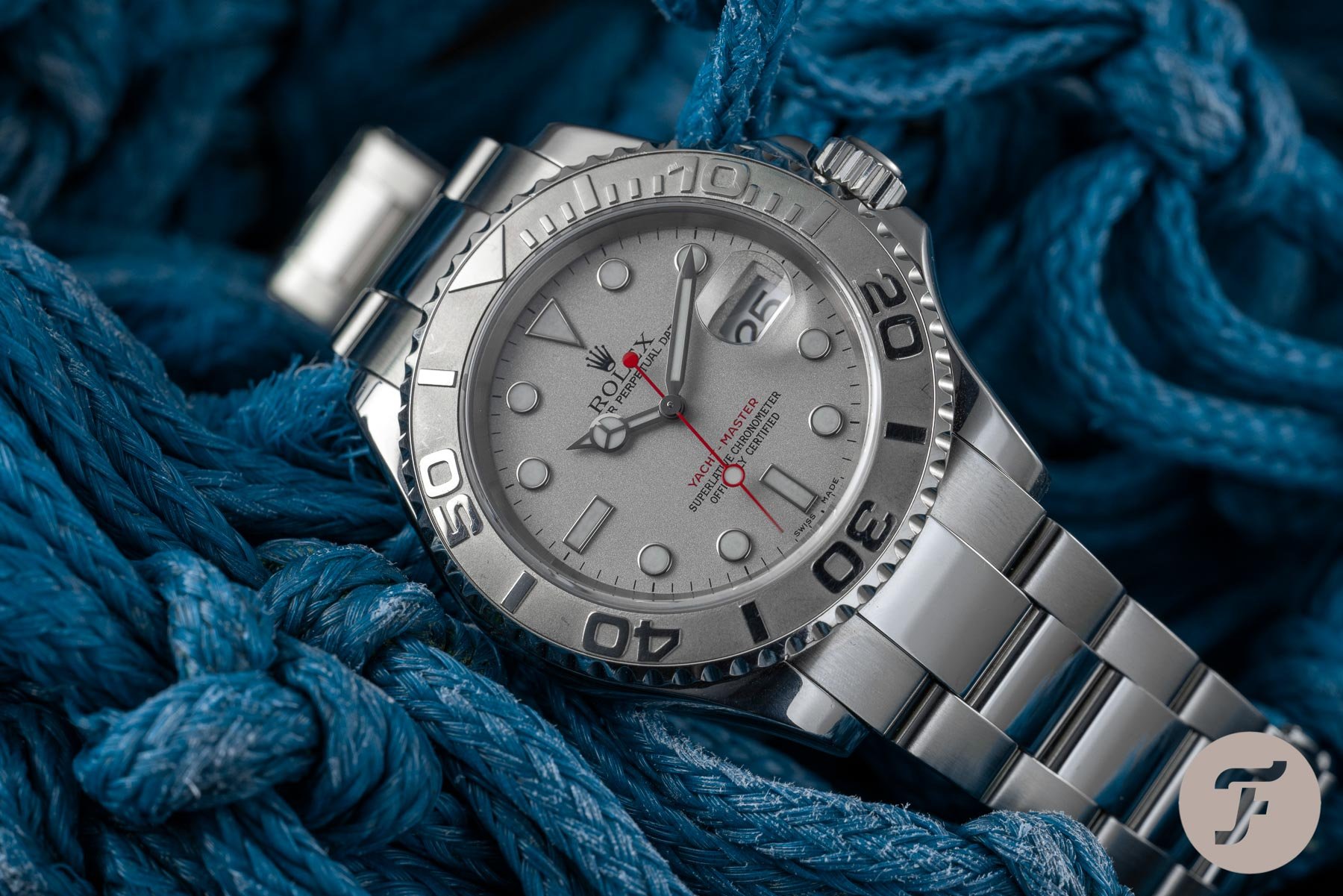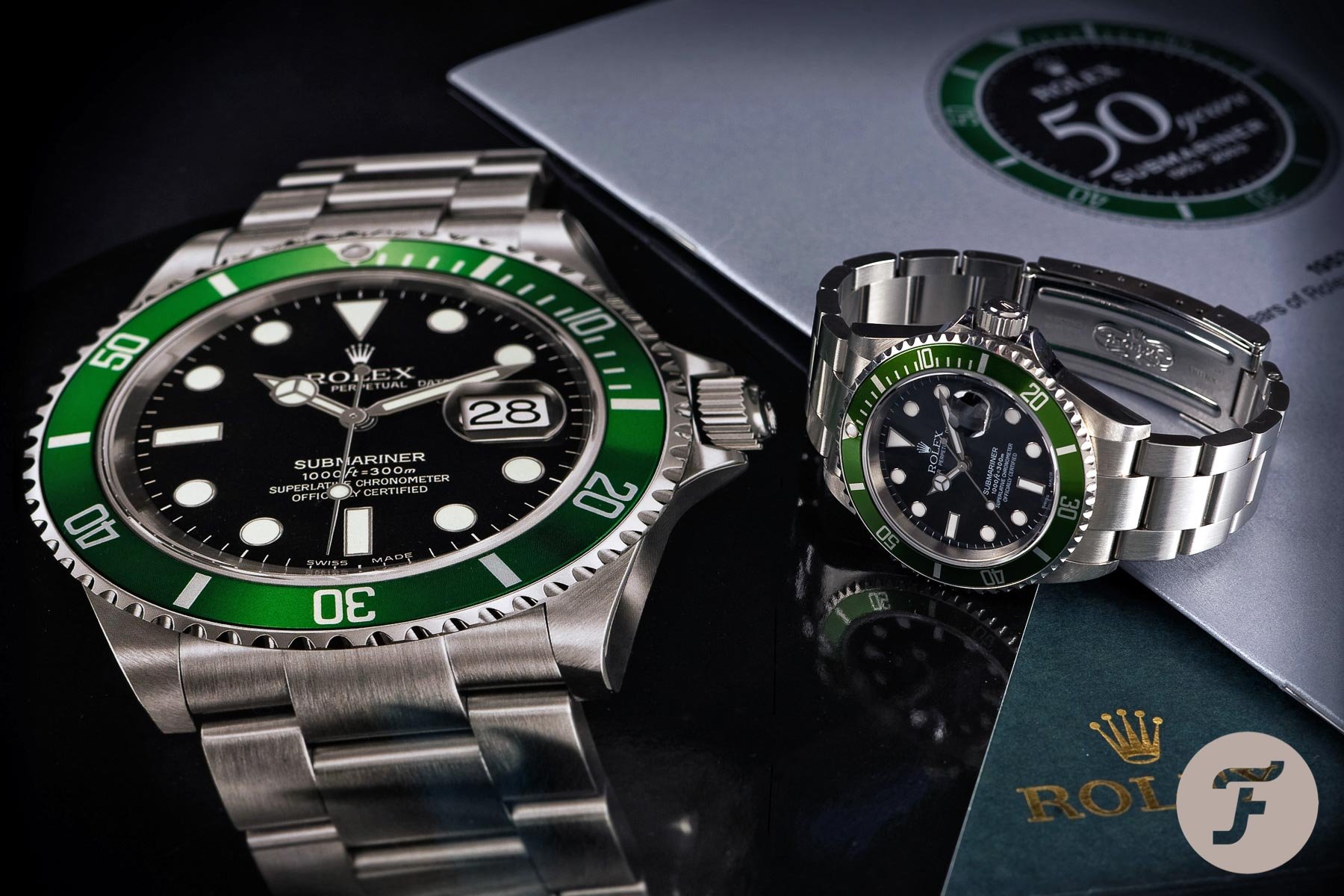A Brief History Of Time: Rolex’s Complete Brand History — Part Four: 1988-1999
Welcome back to a Brief History of Time. Today, we bring you the fourth installment in our series on the complete history of Rolex. Though I swore at the end of Part Three that this would be the last installment, the analytics don’t lie — you guys love Rolex-related content! So, in a multi-faceted strategy to both give you what you want and preserve my own sanity, this one is going to be a bit shorter than the previous chapters.
To recap, when we left off in 1988, Rolex had just released the first major update to the Daytona in 16 years, the reference 16520. Not only did it feature a new look, but it also housed a new movement, the El Primero-based Rolex 4030. Indeed, throughout the 1970 and ’80s, several of the brand’s most important models had seen improvements in both their designs and mechanics. And Rolex was just getting started. In fact, the Daytona was not the last important update of the 1980s, or even 1988 itself. Today, we pick up right where we left off, discovering the many small improvements the brand would continue to make to its massively successful collection. If Rolex reference numbers are your idea of a party, you’ll definitely not want to miss this one.
Upgrading the Datejust and Day-Date lines
In addition to the new Daytona, 1988 also saw Rolex’s iconic Datejust and Day-Date receive some mechanical upgrades that would take them through the next decade and beyond. Aesthetically, the watches hardly changed at all. But under the hood, Rolex really got serious. The Datejust received the brand’s newest time/date caliber, the 3135. It was an improvement over the outgoing 3035 movements in that it now had a full balance bridge for better stability, improved power reserve of 50 hours, an overcoil hairspring for greater amplitude through its entire power reserve, a higher jewel count, and Kif shock protection. Rolex would continue to use the 30XX-series movements in its non-date offerings while upgrading its date-equipped watches with the newest 31XX calibers. The 162XX-series of Datejusts also received a sapphire crystal for the first time in the model’s history.
The Day-Date, though, had used a sapphire crystal for ten years by that point. The final order of business for the model was to equip it with a movement that had both a quick-set date and day function. Rolex did this in 1988 with the Day-Date reference 18238. Replacing the caliber 3055, which only had a quick-set date, the new 3155 movement inside had all of the technical upgrades seen in the Datejust’s 3135 caliber, with an additional quick-set day function. These upgrades would carry the Datejust and Day-Date into the new millennium, with both models enjoying massive success in the 1990s.
The most serious Sea-Dweller yet
The new 3135 movement also found its way into the brand’s legendary dive watches, the Submariner and Sea-Dweller. By 1988, the Submariner reference 16610 (released a year earlier) and the Sea-Dweller reference 16600 both featured the new caliber. This particular Sea-Dweller would enjoy a fantastic 30-year production run. It is also an important reference, as it is the first Sea-Dweller to utilize a 904L stainless steel case.
Except for the transitional Submariner reference 168000, produced for roughly nine months in 1987, Rolex had used the industry-standard 316L alloy in nearly all of its steel watches, including the Sea-Dweller. The brand had noticed, however, that over long periods of time, mineral buildup from saltwater exposure could cause pitting and corrosion around the gaskets in its cases. To combat this, the brand began researching 904L stainless steel in the mid-1980s. This alloy had higher percentages of chromium and molybdenum than 316L, making it more corrosion-resistant. In addition to this, it held a noticeably better polish than 316L. However, being both more expensive and more difficult to machine, the brand would not adopt it for all of its cases and bracelets until the 2000s.
The third generation of the Air-King
In 1989, Rolex introduced the first significant revamp of the Air-King in 32 years with the references 14000 and 14010. The new references replaced the basic 34mm steel Air-King reference 5500 and its many variants. In the past 32 years, the Air-King had seen gratuitous departures from the basic steel model it started as. They included a larger 35mm version, a two-tone model with a solid gold fluted bezel, and even gold-plated variants. But with the new 14000 and 14010, Rolex took the opportunity to return the Air-King to its roots as a time-only, 34mm steel piece.
The watches featured Oyster bracelets, the Oyster case, an automatic, non-chronometer-certified, 4-hertz caliber 3000, and upgraded sapphire crystals. While the 14000 had a smooth steel bezel, the 14010 had an engine-turned steel bezel. This provided a cost-efficient alternative to the brand’s precious metal fluted bezel. Dials came in silver, white, blue, black, gray, and salmon colors with either baton indices, Roman numerals, or the 3-6-9 Explorer layout.
The reference even saw the legendary “Domino’s Pizza” dial, which carried over from the reference 5500. This variant was given as a prize to Domino’s Pizza franchisees whose stores surpassed $25,000 in sales per week for four weeks in a row. Including the “M” references introduced in 2000 with upgraded movements and Super-LumiNova, the 14000 and 14010 would remain the basis for the Air-King for 18 years.
The Explorer gets a facelift
Continuing the trend of updating its long-running references, in 1989, Rolex gave the Explorer its first makeover in 27 years. Replacing the iconic reference 1016, the brand introduced the Explorer reference 14270. The watch retained its 36mm diameter, Oyster bracelet, and Mercedes hands. The new Explorer, however, received a thicker case, a sapphire crystal, and a chronometer-certified version of Rolex’s caliber 3000. But the most noticeable changes were on the dial. Replacing the matte black dial and painted indices of the 1016, the new Explorer featured a glossy black dial with white gold tritium-filled indices. While the Explorer’s 3-6-9 numerals looked much more modern, they actually slightly resembled the numerals from rare Air-King models from the 1950s and ’60s.
For a short period in 1990 and 1991, Rolex produced a variation of the Explorer 14270 known by collectors today as the “Blackout.” The 3-6-9 numerals on this variant featured a black enamel filling. Due to their high-polished finish against the stark black dial, the numerals seemed to disappear in less-than-optimal lighting. The public didn’t take to this look very well, leading Rolex to quickly revert to a white filling. Other than movement and lume upgrades around 2000, the Explorer in this modern style would remain largely unchanged for another two decades.
The evolution of the GMT-Master II
In 1989, the Rolex updated the GMT-Master II, replacing the 16760 “Fat Lady” with the new reference 16710. As the first GMT-Master II, the “Fat Lady” had provided an independently adjustable hour hand. It had also featured a chunky case to accommodate the 7.2mm-thick caliber 3085 and only a black/red “Coke” bezel. The new 16710, however, used the new-and-improved caliber 3185. It was significantly thinner than its predecessor at just 6.45mm thick. Like the date-only 3135, it featured a full balance bridge for better stability and a new overcoil hairspring for greater amplitude and accuracy throughout its power reserve. Aesthetically, the 16710 brought the popular blue/red “Pepsi” and all-black bezel inserts, which had previously only been available on the GMT-Master, into the GMT-Master II line. The 16710 would enjoy a nice, long 18-year run in the Rolex lineup.
The two-tone 16713 and solid yellow gold 16718 also hit display cases in 1989. They were available with brown, black standard dials, as well as silver and champagne gem-set “Serti” dials. Both these references and their steel counterparts were available with Oyster or Jubilee bracelets. The new two-tone and solid gold GMT-Master II references would remain in the catalog for 16 years.
The Explorer II hunkers down for the long haul
But the GMT-Master II was not the only watch to benefit from the 3185 movement in 1989. Rolex’s “other GMT,” the Explorer II, also received an upgrade that same year. Having introduced the massively restyled Explorer II reference 16550 with caliber 3085 in 1985, the brand discontinued that transitional reference and replaced it with the Explorer II reference 16570. Along with the new movement, the white “Polar” dial variant also featured a new paint that was less prone to creamy discoloration. Additionally, the white gold hands and indices were painted black to provide better contrast with the dial, and the font on the 24-hour bezel became slightly less exaggerated. The Explorer II reference 16570 would remain in the Rolex catalog for 22 years.
The new “budget” Submariner
In 1990, Rolex replaced the 27-year-old Submariner reference 5513 with the new 14060. As the lowest-priced Submariner option, the watch featured the same time-only caliber 3000 found in the Air-King and was not chronometer certified. The Submariner 14060 was notable for its use of both a sapphire crystal and a Triplock crown. It became the first non-date Submariner with this combination of features and, consequently, the first with 300m of water resistance. As the 14060 was the entry point into the Submariner line, the watch would retain its non-chronometer-certified status for a whole 17 years, despite a movement upgrade in 1999 in the 14060M. Today, however, many collectors appreciate the 14060 for its clean and symmetrical “two-line” dial.
Let’s not forget the Oyster Perpetual family
Let’s face it — many people tend to overlook the Oyster Perpetual and Oyster Perpetual Date. Admittedly, even I have been guilty of this in past articles. However, I feel it is important to note that these faithful models were ever-present, evolving right alongside their more popular stablemates. While the details of specific release years, unfortunately, become extremely murky for these models, by the early 1990s, the standard men’s Oyster Perpetual and Oyster Perpetual Date all received modern movements and sapphire crystals while retaining their traditional 34mm diameter. The non-date models (references 142XX) contained the caliber 3000. Unlike the 34mm Air-King, however, they were chronometer-certified. They were also available with a huge array of metal, dial, bezel, and bracelet options.
The Oyster Perpetual Date models (reference 152XX) were basically just like the Datejust, only 2mm smaller. They featured caliber 3135 and all the bells and whistles of their bigger brethren. In addition to these 34mm models, Rolex also produced 31mm mid-sized and 26mm ladies’ versions. These were also available both with and without a date function. Like the other updated models introduced in this time period, these modern Oyster Perpetuals would remain largely unchanged into the 2000s.
Perhaps it’s the head-spinning variety of Oyster Perpetual and Oyster Perpetual Date models that makes them less likely to grab enthusiasts’ attention. These days, however, they are accessible options in the world of “neo-vintage” Rolex, with very few compromises other than their smaller size.
New for ’92
In 1992, Rolex saw the departure of CEO André Heiniger and welcomed his son Patrick to the helm. In his 16-year tenure as head of the company, the next Heiniger would continue his father’s quest to dominate not only the tool watch market but the luxury watch market as well. That same year, the brand introduced two new models, aimed specifically at its most affluent clientele.
The first of these was the Pearlmaster, an opulent solid gold offshoot of the Datejust just for the ladies. Available in both 29 and 34mm sizes, the Pearlmaster featured an all-new bracelet and a softer, more curvaceous case. Produced only in white and yellow gold, these first Pearlmasters featured diamond-set bezels and dials in a variety of colors. Throughout the ’90s, the bracelet became a canvas for diamond, sapphire, and ruby settings as well. As an Oyster, the Pearlmaster featured a Twinlock screw-down crown and 100m of water resistance. Inside beat the Rolex caliber 2135, a miniaturized version of 3135 available in the brand’s best men’s watches of the day. Interestingly, the 2135 movement enjoyed a reputation for the highest first-time pass rate of all mechanical movements submitted for chronometer certification.
The heir to the Submariner?
The biggest Rolex development of 1992, however, was the brand’s first “all-new” men’s professional watch since 1971 — the Yacht-Master, reference 16628. Perhaps, though, the phrase “all-new” should be taken lightly. The Yacht-Master name itself, in fact, had been used on some Daytona prototypes in the late 1960s. And to be quite honest, the Yacht-Master of 1992 looked eerily like a gold Submariner. Many even say that Rolex designed it to replace the Submariner, but thought better of it in the end. Although it had the same 40mm diameter, dial layout, hands, and 3135 caliber as the Submariner, the Yacht-Master’s bi-directional relief bezel, softer case lines, exclusively solid-gold construction, and 100m of water resistance did set it apart. Though it was still no slouch in the specs department, I think many will agree that it wasn’t as well-suited to extreme environments.
But though the Yacht-Master was better for life above the sea than below it, it would still go on to make quite a name for itself. This more luxurious “Submariner alternative” was actually quite a success, and with it, Rolex began to really establish itself as a name in the yachting world. The Yacht-Master would also become the first professional model to see a range of sizes. In 1994, Rolex released the Yacht-Master in a 35mm midsize version (reference 68628), as well as a 29mm ladies version (reference 69628). Throughout the ’90s, the Yacht-Master would see blue, silver, champagne, and mother-of-pearl dials, as well as two-tone variants with references 68623 and 69623.
The white gold Daytona
In 1997, Rolex released the very first white gold Daytona. Like the other Daytonas of the time, the 16519 featured the Zenith El Primero-based caliber 4030. At first glance, the reference 16519 even looked very much like its stainless steel counterpart. Upon closer inspection, however, a bolder, more modern font on the engraved bezel hinted that it was indeed something special. This font would be used exclusively on precious metal Daytona bezels for the next few decades. The white gold Daytona 16519 was also the first Daytona to come on a factory-supplied alligator strap with a single-fold deployant buckle. The model featured a wide array of dials in white, black, salmon, mother-of-pearl, and even stones like sodalite. Many dials also featured diamond accents.
Eyes to the future
The year 1998 marked a few significant events for Rolex. First, the brand purchased its longtime bracelet manufacturer, Gay Frères. Originally founded in Geneva in 1835 as a producer of fine gold pocket watch chains, Gay Frères played an enormous role in the Swiss watch industry during the 20th century. Though it had a long reputation for its fine goldsmithing, Gay Frères became one of the first manufacturers to master the use of stainless steel in wristwatch bracelets. Not only was the company responsible for Rolex’s most famous bracelets, like the Oyster, but it also produced legendary bracelets for the Zenith El Primero, Audemars Piguet Royal Oak, Patek Philippe Nautilus, and Breitling Chronomat. With its sights on total future independence, Rolex thought it best to bring this expertise in-house. Over the coming years, the brand would continue to acquire its other suppliers, eventually becoming the self-reliant powerhouse it is today.
The same year, Rolex also began using a new luminescent compound called LumiNova. Developed by the Japanese company Nemoto & Co. in 1993, the material was photoluminescent. This meant it stored photons after being charged by a light source, producing a pleasant green afterglow. Unlike the tritium used on Rolex watches since 1963, LumiNova was not radioactive, would not lose its glowing capabilities over time, and would not show visible signs of age. Rolex wanted to make sure its watches would stand the test of time, not only in their mechanics but also in their materials. Therefore, the switch to LumiNova was a completely logical one. Dials with LumiNova paint bore the “Swiss” label at 6:00, and are known by collectors today as “Swiss only” dials.
Rounding off the millennium with a new Yacht-Master
In 1999, Rolex bid farewell to the 20th century with the release of the Yacht-Master reference 16622. Quite a departure from the solid gold and two-tone versions that came before it, the 16622 was made of mostly stainless steel. However, it featured a unique solid platinum bezel and a course-grained platinum dial. Rolex called this metal combination “Rolesium,” and it was a stealthy way to balance both luxury and accessibility in the Yacht-Master line. Under the hood, however, the 16622 remained powered by caliber 3135, Rolex’s greatest movement of the period. To read more about our founder RJ’s personal experience with the Yacht-Master 16622, check out his article here.
Signing off. For now…
As you can tell, the tail-end of the ’80s and all of the ’90s was largely a time of modernization and incremental change for The Crown. Was it the most revolutionary era for the brand? No, it wasn’t. Was it the most innovative decade or so in Rolex history? No, it wasn’t that either. It was, however, a pivotal period, which saw many of the last big updates to the five-digit favorites in the brand’s strong core collection.
The new millennium would bring with it a slew of technical innovations, aesthetic changes, and even (thankfully) some new models. In order to give these developments the space and detail they deserve, I’m calling it a wrap on this one, my friends! I hope you’ll join us back here in a few weeks, as we examine the next chapter of the history of Rolex. Will it be the final one?
Well, let’s just say I’m not making any promises!

